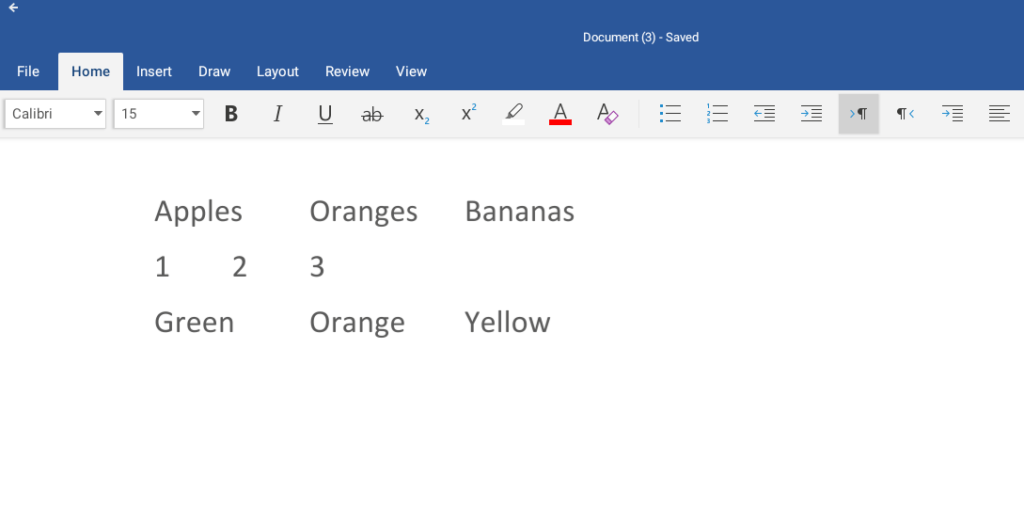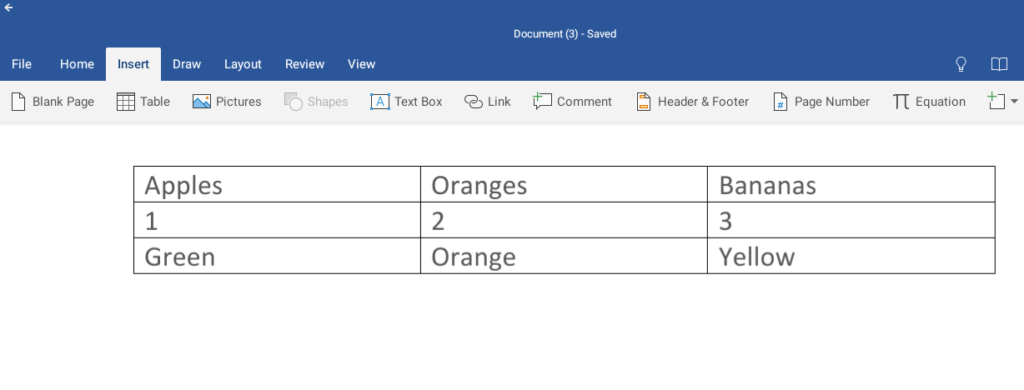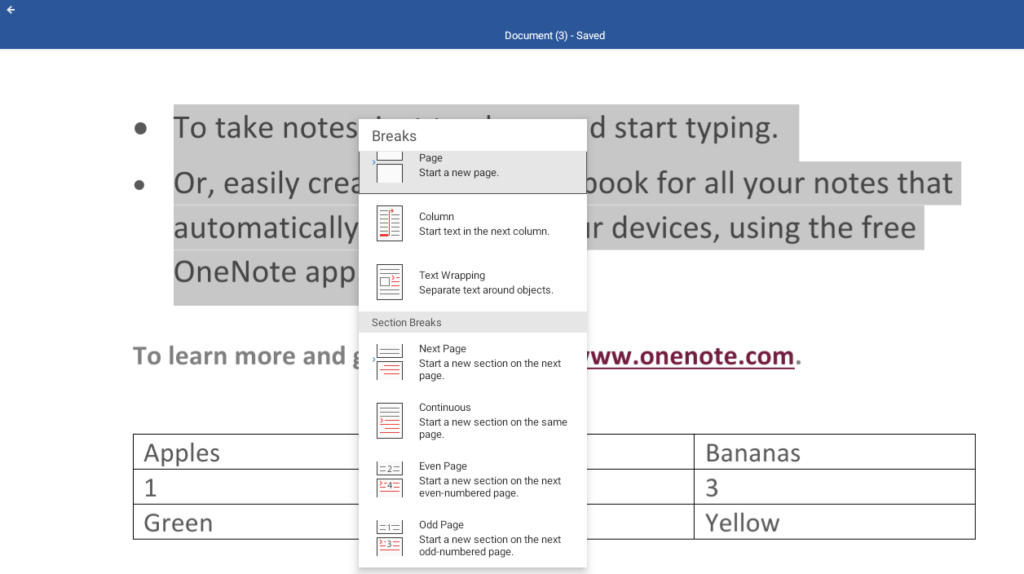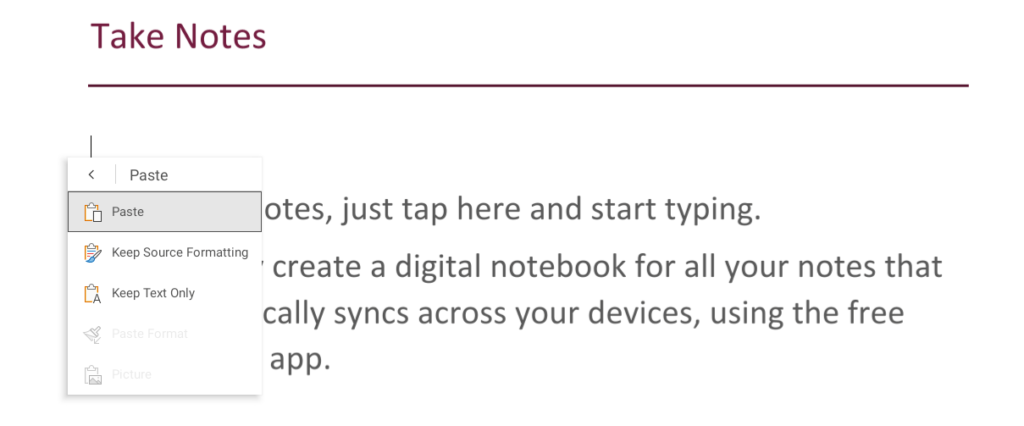How To Remove Paragraph Symbols In Word 2007
I remember, starting time, seeing these niggling astern P thingies when I was at school. In Information technology lessons, we learned the ins and outs of using Microsoft Part. And the teacher would accept u.s.a. check that any documents we created were laid out prissy and neatly with no mistakes. We, of course, did this using formatting marks, including the astern P, i.e. the paragraph symbol (¶).
Some people still find paragraph symbols useful today. They're slap-up for checking your work when you need to share or submit any kind of formal document, for example. Others think formatting marks only go in the manner.
Either manner, information technology'due south good to know how to switch them on or off. Then, in this post, we're going to show you how to plow off the paragraph symbol in only two elementary steps. Plus, you can read on to observe a bunch of handy data about paragraph symbols along with further formatting tips.
How to Turn Off the Paragraph Symbol in Word
Windows
Pace 1. Head to File > Options > Display.
Footstep 2. Under E'er prove these formatting marks on the screen, uncheck the box next to Paragraph marks.
Mac
Footstep 1. Head to Give-and-take > Preferences > View.
Stride two. Nether Show Non-Printing Characters, uncheck Paragraph marks.
To plow paragraph symbols on again, but follow the same steps but check the box instead.
What is the Paragraph Symbol in Word?
Also known every bit a pilcrow or paragraph mark, the paragraph symbol (¶) is a type of formatting mark in Microsoft Word. When y'all take paragraph marks switched on, a paragraph symbol appears at the terminate of each paragraph when you striking return. They won't appear on your document when you impress information technology.
The paragraph symbol also contains formatting information for its corresponding paragraph. Thus, if you want to copy the formatting of one paragraph (the font, size, etc.), you just need to re-create and paste the symbol onto some other paragraph. The symbol at the terminate of the doc contains formatting information for the entire doc, e.g. margins or headers.
Why Use the Paragraph Symbol?
Paragraph symbols are useful for checking the layout of your Discussion document. For case, you might switch on paragraph marks and discover that y'all've hitting the render button twice, leaving too much infinite betwixt ii paragraphs. If you want your doc to wait professional so this is, of class, something that y'all'd demand to fix.
Paragraph symbols besides assistance the person who edits the document, whether that's you, a colleague or a professor, for example. When you starting time to delete text, tables, images and the like, it helps to know that the paragraph formatting is still correct. In other words, you lot're not leaving any random gaps in the document. Similarly, if you insert text or objects it'll help you maintain the formatting, i.e. distinguishable paragraphs.
Furthermore, paragraph marks are useful when you copy and paste text from another channel, e.one thousand. a Zoom transcript, or document format, e.chiliad. a PDF. They'll help y'all discover what kind of formatting is already in identify and help you create a make clean, organized document.
When might they not be useful? Some users observe paragraph symbols and other formatting marks too distracting when trying to create a document.
What are the Other Formatting Marks in Word?
There are a number of further formatting marks you lot can use in Microsoft Word. Go to File>Options>Display and you tin can switch individual formatting marks on or off, or choose to show all formatting marks.
Here are some of the more mutual formatting marks and what they're used for:
ane. Tab Characters
The tab grapheme is a small-scale right-facing arrow (→). Use these characters to run into where the text has been indented. It's less mutual now, but traditionally you would always indent the beginning of a new paragraph.
You may utilise a lot of indents if yous're writing a volume – to signal a new chapter, department or dialogue. Or perhaps y'all use indents to cite somebody else's text in an article or essay. These are a few instances where it would be useful to toggle the tab character on and cheque if you lot've formatted your writing correctly.
2. Spaces
The infinite character appears as a small dot betwixt words(·). Yous tin apply them to bank check your medico for double or multiple spaces. It's unlikely that you'll always need multiple spaces. You tin employ other formatting features to create a cleaner effect, e.g. tabs.
Using the space grapheme may be useful as a double space is harder to spot than an extra paragraph line.
3. Object Anchors
An object anchor looks like a little transport anchor (⚓). They indicate the position of a floating image in relation to a paragraph.
Inline images appear on their ain line between paragraphs. While floating images have text flowing around them. You might employ a floating image if yous only demand a small-scale image and want to avoid having blank space. For example, you may have a small headshot with text flowing effectually information technology at the summit of your resume.
So, you can utilize the object anchor to make sure your floating images are inserted in the right spots.
Microsoft Give-and-take Formatting Tips
You've no doubt got the basics down. So, here are some more than advanced formatting tips and tricks that will save you time and energy:
1. Utilize Templates
Forego the headache of formatting your certificate from scratch. Just use a template instead. The great thing is, Word has templates to adjust a variety of purposes.

For instance, in that location are templates that will help you create a professional-looking resume and cover letter. At that place are even templates already formatted in the MLA and APA styles for papers. How handy is that?
You tin also create your own templates in Word. This means you won't need to format every document individually which could relieve you a lot of fourth dimension. Furthermore, information technology will ensure that all of your docs are formatted consistently.
ii. Capitalize Words Easily
It'due south so abrasive when y'all type something out and so take to capitalize information technology manually. For example, if y'all decide to turn a sentence into a header.
Thankfully, in that location'due south a much easier fashion to capitalize the unabridged sentence in 1 go:
Step 1. Highlight the text you lot desire to capitalize.
Step 2. Click the Aa button.
Pace 3. Select Capitalize Each Word.
In fact, this button has several useful actions. Yous tin change text to sentence case, uppercase or lowercase. Again, this is a fantastic time-saving hack.
three. Utilize Quick Styles
If you're using a template or working on a certificate you didn't create, the formatting on different parts of the text may non be immediately articulate. Merely, you can look at the styles pane, or button depending on which version of Give-and-take you lot're using, and information technology'll tell y'all whether the text in question is a H1, H2, H3 then on.
What'due south fifty-fifty libation is that you can create your own quick styles. Let's say you format text a certain manner on the reg. For case, you make the font size 16, plow the text blue and align information technology to the center. Y'all can set that exact format, or any format you wish, as a quick style:
Stride 1. Highlight the text.
Step 2. Click the Styles pane menu.
Step 3. Select New style.
Step iv. Requite your new style a proper noun.
4. Modify the Default Font
Though we may non like to admit it, many of us have a preferred font. Maybe yous like the style of Garamond or cull Arial considering you lot experience it'due south easiest to read. Or perchance your college or employer etc. has a preferred font that you demand to use.
Give-and-take'south default font is Calibri. It would be mighty frustrating to change that font every single time you create a document.
Luckily, you lot can change the default font to suit your needs:
Step ane. Click the font dialog box launcher.
Step 2. Choose your font from the bill of fare.
Step 3. Click Set As Default.
Here, you can also gear up the default size, style and other font formatting options.
five. Create Tables Quickly
Tables await cracking in a Discussion document. They can assist you lot display information visually or make the document await a lot cleaner. The problem is, creating tables tin can be awkward.
But, did you know there's a speedy and simple way to create tables? All you have to do is place tabs or commas between the text y'all desire to separate in a table:

Then highlight the text, go to the Insert tab and click the table icon. And hey presto, a nice, neat table appears around your text:

6. Remove Formatting
Sometimes yous might be working on a certificate and can't seem to get the formatting right. Or you reach the end of a projection and the formatting doesn't look the manner you lot hoped or expected. In times like these, it may be better to start from scratch and re-do the formatting.
You can remove the formatting of your entire document:
Step one. Apply Ctrl + A to highlight the whole certificate.
Step 2. Click the Articulate All Formatting push – it's an A with a little eraser:

7. Insert a Table of Contents
Creating a tabular array of contents for your Give-and-take document is really easy. But, non everybody knows how to do it.
You don't take to type and format your table of contents manually. Word will do it for you lot, using the headers in your certificate.
Here's what yous need to practice:
Step 1. Place your cursor where you want your table of contents.
Step 2. Go to References and select Tabular array of Contents.
Step 3. Cull a way.
If y'all make edits to the doc that volition alter the tabular array of contents, don't forget to right-click the tabular array of contents and click Update field.
8. Use Section Breaks
You lot may run into difficulty if you want formatting to simply apply to one page or part of a page. For example, you may wish to have just one landscape page in the middle of your document or perchance you want your appendix page to wait different from the rest of the doc. The reason this kind of thing might prove difficult is that when you alter formatting in Word it applies the changes to the entire document.
The workaround for this is to add in department breaks. Then, any formatting changes will just utilise to the section y'all're using.
To add in department breaks go to Layout and then Breaks. You'll see a few unlike options for section breaks:

Select Next Page if you want the formatting to be unlike on the next page or Continuous if you need to alter the formatting on the same page.
9. Change the Formatting of Copied Text
When you copy and paste text from a website, for example, the copied text retains its original formatting, i.e. how it looks on the web page yous got it from. You'll more than likely desire to modify this so that the copied text fits in with the rest of your document.
To exercise this:
Step 1. Correct-click where you desire to paste the text.
Step 2. Click the arrow next to the paste icon.
Pace iii. Select Keep Text Only.

The text that you paste volition now friction match the formatting of your document.
Summing Up
Using the paragraph symbol and other formatting marks can be beneficial. Their main employ is to check your document for formatting errors.
Switching paragraph symbols on or off is a matter of checking or unchecking a box in the Display bill of fare.
There are lots more ways you lot can make formatting your document simple. Setting your ain quick styles, for example. Or removing formatting altogether to starting time from scratch.
Hopefully, with all of this advice, you lot'll become a formatting whiz very before long.
How To Remove Paragraph Symbols In Word 2007,
Source: https://nira.com/word-paragraph-symbol/
Posted by: lewisplar1972.blogspot.com


0 Response to "How To Remove Paragraph Symbols In Word 2007"
Post a Comment